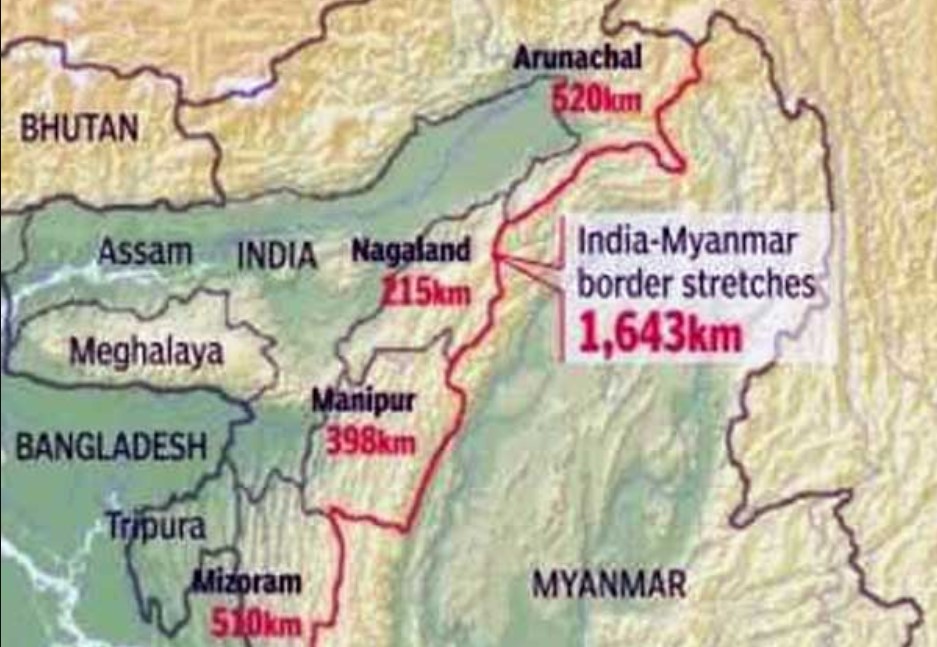The Indian government has recently announced plans to fence the entire 1,643-kilometer-long Indo-Myanmar border. This decision effectively ends the free movement regime (FMR) that allowed people on both sides to venture 16 kilometers into each other’s territory without any documents.
Here are the key points regarding this significant development:
- Reasons for Fencing:
- The move aims to enhance surveillance along the border.
- It seeks to curb insurgencies, smuggling, and the drug trade in the region.
- Details of the Decision:
- Union Home Minister Amit Shah emphasized the government’s commitment to building impenetrable borders.
- The entire 1,643-kilometer-long Indo-Myanmar border will be fenced.
- To facilitate better surveillance, a patrol track along the border will also be paved.
- A 10-kilometer stretch in Moreh, Manipur, has already been fenced.
- Two pilot projects for fencing through a hybrid surveillance system are underway, covering 1 kilometer each in Arunachal Pradesh and Manipur.
- Additionally, fence works covering approximately 20 kilometers in Manipur have been approved and will commence soon.
- Impact and Implications:
- Ending the FMR is expected to put a lid on insurgencies in the north-east, as well as smuggling and the drug trade.
- Going forward, anyone wanting to enter India from Myanmar will need valid travel documents, similar to practices adopted for air and sea travel.
Q: What is the length of the Indo-Myanmar border that the Indian government plans to fence?
- A) 1,643 kilometers
- B) 2,000 kilometers
- C) 1,000 kilometers
- D) 3,500 kilometers
Answer: A) 1,643 kilometers
Q: What was the purpose of the free movement regime (FMR) along the Indo-Myanmar border?
- A) To promote tourism
- B) To facilitate trade
- C) To allow people to venture 16 kilometers into each other’s territory without documents
- D) To strengthen border security
Answer: C) To allow people to venture 16 kilometers into each other’s territory without documents
Q: Why is the Indian government fencing the Indo-Myanmar border?
A) To prevent wildlife trafficking
B) To curb insurgencies and smuggling
C) To promote cultural exchange
D) To facilitate cross-border trade
Answer: B) To curb insurgencies and smuggling



